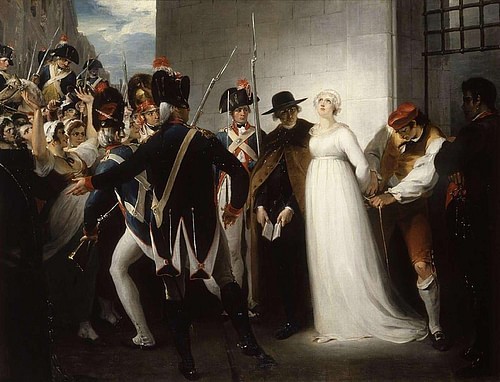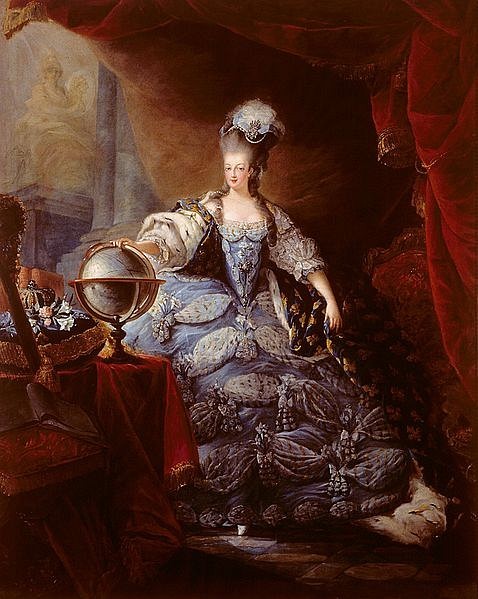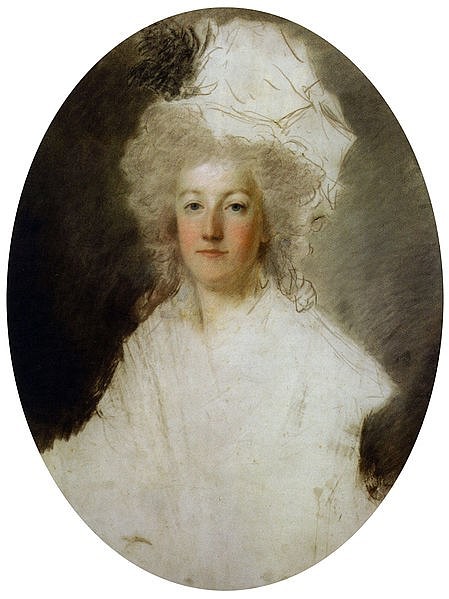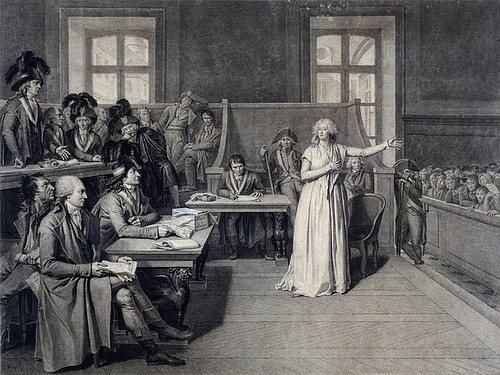Why was Marie Antoinette executed? The unfortunate demise of Marie Antoinette remains a captivating subject, inspiring countless debates, discussions, and academic explorations. At WHY.EDU.VN, we delve into the depths of history, providing comprehensive answers and insights into the reasons behind her execution, offering you a clear understanding of the historical events, French Revolution context, and the key players involved in this pivotal moment with the help of guillotine, Reign of Terror, and high treason.
Table of Contents
- The Unpopular Queen: Seeds of Discontent
- Imprisonment and Loss: The Royal Family’s Downfall
- Accusations and Allegations: The Charges Against Marie Antoinette
- The Revolutionary Tribunal: Justice or Political Theater?
- The Trial: A Preordained Outcome?
- The Execution: A Symbol of Revolution
- Historical Context: The French Revolution and the Reign of Terror
- Marie Antoinette’s Legacy: Victim or Villain?
- Exploring the Key Figures in Marie Antoinette’s Downfall
- Unveiling the Motives Behind Marie Antoinette’s Execution
- The Role of Propaganda and Public Opinion in Marie Antoinette’s Execution
- Understanding the Impact of Marie Antoinette’s Execution on the French Revolution
- Examining the Controversies and Debates Surrounding Marie Antoinette’s Execution
- The Importance of Studying Marie Antoinette’s Execution in Modern History
- Frequently Asked Questions (FAQs) About Marie Antoinette’s Execution
1. The Unpopular Queen: Seeds of Discontent
Marie Antoinette, the Austrian-born queen of France, became a figure of intense scrutiny and animosity long before the French Revolution. Her extravagant lifestyle, perceived indifference to the plight of the French people, and foreign origins fueled widespread discontent. The infamous “affair of the diamond necklace,” a scandal involving a fraudulent purchase of a lavish necklace, further tarnished her reputation, regardless of her actual involvement. The public viewed her as a symbol of royal excess and detachment from the struggles of ordinary citizens. These perceptions, amplified by political rivalries and scandalous pamphlets known as libelles, laid the groundwork for her eventual downfall. Her image as “Madame Deficit,” as she was mockingly referred to, was fueled by rumors of her financial recklessness and lavish spending, solidifying her unpopularity and making her a target of revolutionary sentiment.
2. Imprisonment and Loss: The Royal Family’s Downfall
The storming of the Tuileries Palace in August 1792 marked a turning point for Marie Antoinette and the royal family. Stripped of their power and prestige, they were imprisoned by the revolutionaries, first in the Temple prison and later in the Conciergerie. The execution of Louis XVI in January 1793 dealt a devastating blow to Marie Antoinette, leaving her a widow and further isolating her within the revolutionary fervor. The separation from her son, Louis-Charles, in July 1793, was particularly traumatic, highlighting the cruelty and dehumanization inflicted upon the royal family. The loss of her husband, coupled with the forced separation from her children, exacerbated her suffering and contributed to her declining health during her imprisonment. These events demonstrate the systematic dismantling of the monarchy and the personal toll it took on Marie Antoinette.
3. Accusations and Allegations: The Charges Against Marie Antoinette
Marie Antoinette faced a barrage of accusations, ranging from political treason to moral depravity. She was accused of conspiring with foreign powers, particularly her native Austria, to undermine the French Revolution. Allegations of financial mismanagement and depletion of the national treasury further fueled public anger. Most damagingly, she was accused of incest with her son, a charge that shocked and disgusted even some of her detractors. While evidence for these accusations was often flimsy or fabricated, the Revolutionary Tribunal presented them as irrefutable truths, solidifying the perception of Marie Antoinette as an enemy of the French Republic.
4. The Revolutionary Tribunal: Justice or Political Theater?
The Revolutionary Tribunal, established during the Reign of Terror, served as a court of law but was heavily influenced by political considerations. Presided over by radical revolutionaries, it was designed to eliminate perceived enemies of the state swiftly and decisively. The trials were often hasty, with limited opportunities for the accused to defend themselves. The outcome was often predetermined, reflecting the political agenda of those in power. Marie Antoinette’s trial before the Revolutionary Tribunal was no exception. The court was stacked against her, and the verdict was likely decided before the proceedings even began.
5. The Trial: A Preordained Outcome?
Marie Antoinette’s trial in October 1793 was a spectacle of revolutionary justice. Despite the lack of concrete evidence, the prosecution presented a case based largely on hearsay, rumors, and political rhetoric. Marie Antoinette defended herself with dignity and composure, but her efforts were ultimately futile. The jury, composed of fervent revolutionaries, found her guilty of treason and sentenced her to death. The trial was characterized by biased testimonies and inflammatory speeches, designed to sway public opinion and legitimize her execution as a necessary act of revolutionary justice.
6. The Execution: A Symbol of Revolution
On October 16, 1793, Marie Antoinette was led to the guillotine at the Place de la Révolution (now Place de la Concorde) in Paris. Her execution was a public spectacle, intended to symbolize the triumph of the revolution over the monarchy. Dressed in a simple white dress, she maintained her composure until the very end. Her death marked a significant moment in the French Revolution, signaling the complete overthrow of the old order and the consolidation of revolutionary power.
7. Historical Context: The French Revolution and the Reign of Terror
Marie Antoinette’s execution must be understood within the context of the French Revolution and the subsequent Reign of Terror. The revolution was a period of radical social and political upheaval, fueled by economic hardship, social inequality, and Enlightenment ideals. As revolutionary fervor intensified, the Reign of Terror emerged, characterized by mass executions and political repression. The execution of Marie Antoinette was a product of this volatile atmosphere, reflecting the revolutionaries’ determination to eliminate any perceived threat to their power.
8. Marie Antoinette’s Legacy: Victim or Villain?
Marie Antoinette remains a controversial figure in history. Some view her as a victim of circumstance, a queen unfairly demonized and unjustly executed. Others see her as a symbol of royal excess and indifference, deserving of the fate she met. Regardless of one’s perspective, Marie Antoinette’s story serves as a cautionary tale about the dangers of unchecked power, the power of propaganda, and the complexities of revolution. Her legacy continues to be debated and reinterpreted, reflecting the ongoing fascination with this tragic figure.
9. Exploring the Key Figures in Marie Antoinette’s Downfall
Several key figures played a role in Marie Antoinette’s downfall, including:
- Maximilien Robespierre: A leading figure in the French Revolution and the Reign of Terror, Robespierre advocated for the execution of Marie Antoinette as a necessary step to secure the revolution.
- Jacques-René Hébert: A radical journalist and politician, Hébert played a key role in disseminating propaganda against Marie Antoinette, including the false accusation of incest.
- Antoine Simon: A cobbler and member of the Paris Commune, Simon was entrusted with the care of Louis-Charles after he was separated from his mother. He allegedly mistreated the young prince and coerced him into making false accusations against Marie Antoinette.
- Count Axel von Fersen: A Swedish diplomat and alleged lover of Marie Antoinette, Fersen attempted to orchestrate the royal family’s escape from France but ultimately failed.
These individuals, driven by varying motives, contributed to the events that led to Marie Antoinette’s execution.
10. Unveiling the Motives Behind Marie Antoinette’s Execution
The motives behind Marie Antoinette’s execution were complex and multifaceted, including:
- Political expediency: Revolutionary leaders believed that executing Marie Antoinette would eliminate a symbol of the old regime and consolidate their power.
- Public opinion: Widespread animosity towards Marie Antoinette made her a convenient scapegoat for the problems facing France.
- Ideological conviction: Some revolutionaries genuinely believed that Marie Antoinette was a threat to the revolution and that her execution was necessary to protect the Republic.
- Personal animosity: Individuals like Hébert harbored personal animosity towards Marie Antoinette, which fueled their efforts to bring about her demise.
These factors, intertwined and mutually reinforcing, contributed to the decision to execute the former queen.
11. The Role of Propaganda and Public Opinion in Marie Antoinette’s Execution
Propaganda played a crucial role in shaping public opinion against Marie Antoinette and paving the way for her execution. Scandalous pamphlets, caricatures, and rumors circulated widely, portraying her as a spendthrift, a traitor, and a morally corrupt woman. This relentless campaign of vilification created a climate of hostility and distrust, making it easier for revolutionary leaders to justify her execution. The power of propaganda to manipulate public perception highlights the importance of critical thinking and media literacy in understanding historical events.
12. Understanding the Impact of Marie Antoinette’s Execution on the French Revolution
Marie Antoinette’s execution had a profound impact on the French Revolution, both domestically and internationally. Within France, it intensified the Reign of Terror, as revolutionary leaders sought to eliminate any perceived enemies of the state. Internationally, it shocked and outraged monarchies across Europe, further isolating France and fueling the ongoing wars against the revolution. The execution of Marie Antoinette remains a symbol of the radicalism and violence of the French Revolution.
13. Examining the Controversies and Debates Surrounding Marie Antoinette’s Execution
Several controversies and debates surround Marie Antoinette’s execution, including:
- The validity of the charges against her: Historians continue to debate the extent to which Marie Antoinette was guilty of the crimes she was accused of.
- The fairness of her trial: Many critics argue that Marie Antoinette’s trial was a sham, lacking due process and fair representation.
- The morality of her execution: Some argue that Marie Antoinette’s execution was a cruel and unnecessary act of political violence, while others defend it as a necessary step to secure the revolution.
- Her historical legacy: The interpretation of Marie Antoinette’s historical legacy remains a subject of ongoing debate and re-evaluation.
These controversies reflect the complexity and enduring fascination with Marie Antoinette’s story.
14. The Importance of Studying Marie Antoinette’s Execution in Modern History
Studying Marie Antoinette’s execution remains relevant in modern history for several reasons:
- It provides insights into the dynamics of revolution and political violence.
- It highlights the dangers of propaganda and the manipulation of public opinion.
- It raises important questions about justice, fairness, and the abuse of power.
- It offers a cautionary tale about the consequences of unchecked authority and social inequality.
- It encourages critical thinking and a nuanced understanding of historical events.
By examining Marie Antoinette’s execution, we can gain a deeper understanding of the complexities of history and its relevance to the present day.
At WHY.EDU.VN, we understand the challenges in finding accurate and reliable answers to complex questions. The internet is awash with information, but it can be difficult to discern what is trustworthy and credible. That’s why we are committed to providing well-researched, expertly crafted content that you can rely on. Our team of experts meticulously investigates each topic, providing you with detailed explanations, diverse perspectives, and accurate information.
If you’re seeking clarity and understanding, look no further than WHY.EDU.VN. Our platform offers a comprehensive resource for answering your questions, exploring new topics, and expanding your knowledge. Whether you’re a student, a professional, or simply a curious individual, we have something to offer.
Do you have a burning question that needs answering? Don’t hesitate to reach out to our team of experts at WHY.EDU.VN. We’re here to provide you with the answers you need, when you need them. Contact us at 101 Curiosity Lane, Answer Town, CA 90210, United States, or via WhatsApp at +1 (213) 555-0101. You can also visit our website at WHY.EDU.VN to explore our vast collection of informative articles and resources. We encourage you to share your questions and engage with our community of learners.
15. Frequently Asked Questions (FAQs) About Marie Antoinette’s Execution
Here are some frequently asked questions about Marie Antoinette’s execution, along with their answers:
| Question | Answer |
|---|---|
| What were the main charges against Marie Antoinette? | Marie Antoinette was primarily charged with high treason, conspiring with foreign powers against France, and depleting the national treasury. |
| Was Marie Antoinette really involved in the Affair of the Diamond Necklace? | While she was not directly involved in the fraud, the scandal severely damaged her reputation and contributed to the public’s negative perception of her. |
| How did Marie Antoinette behave during her trial? | Marie Antoinette maintained composure and dignity throughout the trial, but she was ultimately unable to sway the jury, which was composed of radical revolutionaries. |
| What was the public’s reaction to Marie Antoinette’s execution? | The public reaction was mixed. While many revolutionaries celebrated her execution as a victory for the Republic, others were appalled by the violence and injustice of the event. |
| What happened to Marie Antoinette’s children after her execution? | Her son, Louis-Charles, died in captivity in 1795. Her daughter, Marie-Thérèse, was eventually released and lived to see adulthood. |
| Was Marie Antoinette’s execution justified? | The justification of Marie Antoinette’s execution remains a matter of debate among historians, with some arguing that it was a necessary act of revolutionary justice, while others condemn it as a cruel and unnecessary act of political violence. |
| How did the French Revolution influence her execution? | The French Revolution created the environment in which she would become a symbol of royal excess and opposition to change, setting the stage for her trial and execution. |
| What role did Maximilien Robespierre play in her death? | Robespierre was a key advocate for her execution, viewing her as a threat to the revolution and pushing for her trial and sentencing. |
| How is Marie Antoinette viewed today? | Marie Antoinette is viewed through different lenses today, from a victim of the revolution to a symbol of royal excess and disconnect from the common people. Her legacy is complex and continues to be debated and reinterpreted. |
| What was the Reign of Terror, and how did it impact Marie Antoinette? | The Reign of Terror was a period of extreme violence and mass executions during the French Revolution. It created an environment where Marie Antoinette, as a prominent figure of the old regime, was at great risk and ultimately led to her execution. |






By providing detailed answers to these frequently asked questions, we hope to shed further light on the complex and controversial topic of Marie Antoinette’s execution. Remember, at why.edu.vn, we are dedicated to providing accurate, reliable, and insightful information to help you understand the world around you.
